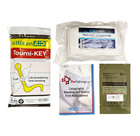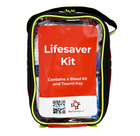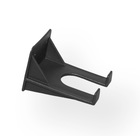Marine band radios
Want to watch this video? Sign up for the course
or enter your email below to watch one free video.
Unlock This Video Now for FREE
This video is normally available to paying customers.
You may unlock this video for FREE. Enter your email address for instant access AND to receive ongoing updates and special discounts related to this topic.
Guide to Marine Band Radios
Overview
Marine Band Radios are essential equipment primarily used at sea or in aquatic environments.
Features
- IP Rating: High IP rating ensures functionality even when submerged in water, be it fresh or saltwater.
- VHF Operation: Operates on VHF frequencies; range varies based on atmospheric conditions and obstructions.
- Types: Available as handheld units or fixed radios; antenna position and height affect radio range.
- Antenna: Typically mounted on boat masts for optimal range.
- Antenna Type: Handheld radios feature robust, floppy antennas suitable for challenging environments.
- Accessory Compatibility: Some radios allow accessories like push-to-talk microphones and data transmission via computer connection.
Specifications
This higher specification Marine radio includes:
- Distress Button: Initiates distress calls to coast guard or relevant agencies; programmable to send call sign and GPS location.
- Buttons: Large, easy-to-use push-to-talk button; programmable function buttons configurable via settings menu.
- MSSI and License: Each radio has an MSSI and requires a license and call sign for operation.
Usage
To operate a Marine Band Radio:
- Completion of a course and test is mandatory to obtain a license and call sign.
Recommended Products For You
First Aid Upgrade Kit
£14.00 + VAT
Lifesaver Kit with Tourni-Key - Red
£85.00 + VAT
WoundClot Trauma 8cm x 100cm
£39.95 + VAT
Cyclist Trauma / Emergency Kit
£55.00 + VAT
Personal Bleed Kit in Belt Pouch - Red
£34.95 + VAT
Lifesaver Kit with Tourni-Key - Black
£85.00 + VAT
Lifesaver Kit with Tourniquet - Red
£99.00 + VAT
First Aid Box Wall Bracket (Single)
£0.35 + VAT


_-Trauma_8x100_CE.jpg)




